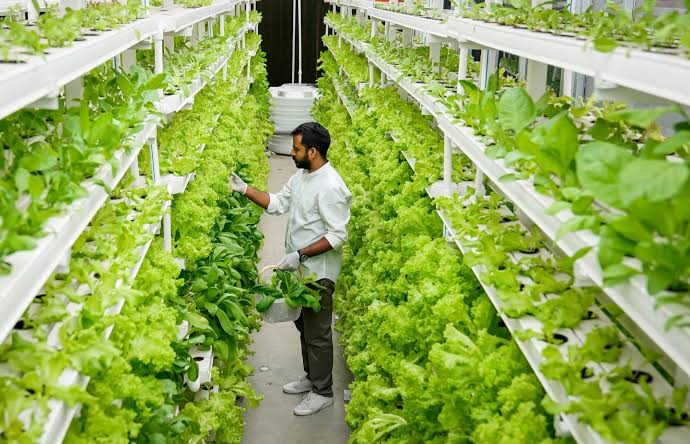What Is Hi-Tech Horticulture?
In a world where agriculture is under constant pressure to produce more with limited resources, hi-tech horticulture has emerged as a game-changer. It integrates advanced technologies with traditional horticultural practices to enhance productivity, improve quality, and promote sustainable farming.
Hi-tech horticulture involves the use of modern tools, techniques, and systems such as greenhouse technology, precision farming, and automation. By adopting these methods, farmers can achieve higher yields, better crop quality, and reduced environmental impact.
Key Components of Hi-Tech Horticulture
Hi-tech horticulture is a multi-faceted approach that combines various modern techniques to optimize agricultural practices. Here are its key components:
1. Protected Cultivation
Protected cultivation involves growing crops in controlled environments like greenhouses, polyhouses, or shade nets. This ensures:
- Optimal temperature, humidity, and light for plant growth.
- Protection from pests, diseases, and extreme weather conditions.
- Year-round cultivation of high-value crops.
2. Precision Farming
Precision farming uses data-driven technology to make informed decisions about planting, irrigation, and fertilization. Key tools include:
- GPS and GIS systems for mapping fields.
- Soil sensors to monitor moisture and nutrient levels.
- Drones for aerial surveillance of crops.
3. Micro-Irrigation Systems
Efficient water management is a cornerstone of hi-tech horticulture. Micro-irrigation systems like drip and sprinkler irrigation help:
- Conserve water by delivering it directly to the root zone.
- Reduce wastage and evaporation.
- Improve plant health and yield.
4. Automation and Mechanization
Automation streamlines various horticultural processes, reducing labor and increasing efficiency. Examples include:
- Automated irrigation and fertigation systems.
- Robotic harvesters for fruits and vegetables.
- Climate control systems for greenhouses.
5. Tissue Culture
Tissue culture is a biotechnology method used to produce disease-free, high-quality planting material. It enables:
- Mass propagation of plants in a short time.
- Consistency in plant traits.
- Preservation of rare or endangered species.
Benefits of Hi-Tech Horticulture
1. Increased Productivity
Hi-tech horticulture significantly boosts crop yields by optimizing growing conditions and resource usage.
2. Better Quality Produce
With controlled environments and advanced techniques, farmers can grow fruits, vegetables, and flowers with superior quality, uniformity, and taste.
3. Resource Efficiency
Modern systems like precision farming and micro-irrigation ensure efficient use of water, fertilizers, and energy, reducing waste and costs.
4. Environmental Sustainability
Hi-tech methods minimize the environmental footprint of farming by reducing pesticide use, conserving water, and promoting soil health.
5. Enhanced Profitability
The combination of higher yields, premium-quality produce, and reduced resource wastage translates to increased profits for farmers.
Popular Applications of Hi-Tech Horticulture
Hi-tech horticulture is transforming the way various crops are grown. Here are some common applications:
1. High-Value Vegetables
Tomatoes, cucumbers, and bell peppers are commonly grown in greenhouses using drip irrigation and fertigation techniques.
2. Exotic Fruits
Fruits like strawberries, dragon fruit, and blueberries thrive under protected cultivation systems, ensuring premium quality.
3. Ornamental Plants and Flowers
Floriculture benefits greatly from hi-tech horticulture, with roses, gerberas, and lilies grown in controlled environments.
4. Herbal and Medicinal Plants
Tissue culture and precision farming are used to grow high-value medicinal plants like aloe vera, ashwagandha, and turmeric.
Challenges in Hi-Tech Horticulture
Despite its numerous advantages, hi-tech horticulture comes with challenges that need to be addressed:
- High Initial Investment:
Setting up greenhouses, automation systems, and advanced irrigation requires significant capital. - Skill Gap:
Farmers need training to understand and implement hi-tech techniques effectively. - Maintenance Costs:
Regular maintenance of systems like sensors, irrigation lines, and climate control equipment can be expensive. - Limited Awareness:
Many farmers are unaware of the potential benefits and availability of subsidies for hi-tech horticulture.
The Future of Hi-Tech Horticulture
The adoption of hi-tech horticulture is expected to grow rapidly, driven by increasing demand for quality produce and sustainable farming practices. Innovations like vertical farming, hydroponics, and AI-driven solutions are set to revolutionize the sector further.
Governments and agricultural organizations are also playing a crucial role by offering subsidies, training programs, and research support to promote hi-tech horticulture.
Conclusion
Hi-tech horticulture represents the future of sustainable agriculture, combining innovation with traditional practices to address modern challenges. From protected cultivation to precision farming, its advanced techniques are enabling farmers to achieve higher yields, better quality, and greater profitability while conserving resources and protecting the environment.
While there are challenges to overcome, the benefits of adopting hi-tech horticulture far outweigh the drawbacks. With proper training, financial support, and continued innovation, this transformative approach will pave the way for a greener, more productive future in agriculture.
FAQs
1. What is hi-tech horticulture?
Hi-tech horticulture integrates advanced technologies like precision farming, protected cultivation, and automation to improve productivity and sustainability in farming.
2. Which crops benefit from hi-tech horticulture?
High-value vegetables, exotic fruits, ornamental plants, and medicinal herbs are commonly grown using hi-tech horticulture methods.
3. What are the advantages of hi-tech horticulture?
It increases productivity, improves quality, conserves resources, and promotes environmental sustainability while boosting farmer profitability.
4. What are the challenges of adopting hi-tech horticulture?
High initial costs, maintenance expenses, skill gaps, and limited awareness are some challenges farmers face.
5. How can farmers start with hi-tech horticulture?
Farmers can seek government subsidies, enroll in training programs, and collaborate with agricultural experts to adopt hi-tech horticulture practices.
